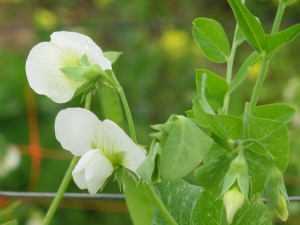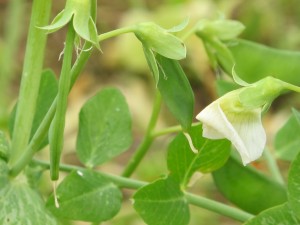Election Monday: Deliveries in most regions as usual, except for Jerusalem and Gush Ezion clients who will be receiving their boxes on Tuesday morning or afternoon.
Here’s to successful elections!
_________________________________
This week began with very cold weather highlighted by a real McCoy rain storm on Tuesday. Legend has it that on a similar stormy night, a fatigued and freezing princess was once wandering around, lost and woeful. To her great joy, she caught sight of a warm glimmer shining through the heavy haze and fog, which turned out to be a charming palace. She sought shelter from the storm and a place with a comfortable bed to rest for the night, but never expected that sleepless, eventful night to turn her into one of the most famous poster princesses for this cute little legume…
The delectable fresh pea has been coming and going from our boxes for some time now, but she’s never been one to overstay her visit. So, while she’s here in all her glory, here’s a Chubeza close-up on the prestigious pea:
Hans Christian Anderson sure loved peas. So much so that he granted the pea extraterrestrial powers, both as a useful tool to distinguish a real princess from a fake (The Princess and the Pea) and even to make a sick little girl all better (Five Peas from a Pod). You can’t help but love the pea. She’s chubby and charming, sweet and joyful, and she doesn’t like being pierced with a fork. If she can, she’ll roll off your plate and all through the house…
Though she pretends to be a young’un, she is in fact one of the most ancient vegetables that human beings have cultivated. The pea is said to have originated in three centers: Central Asia (Northwest India to Afghanistan), the Near East (yup, here too) and Ethiopia. After having been cultivated, this green wonder was spread via wayfarers, merchants, and conquerors till it arrived in the Mideast and the Far East. The remains of a primitive, almost 12,000-year-old pea (a wild pea, not the cultivated type) were discovered in caves on the border of Burma and Thailand. Traces of its granddaughters, only 8000 years old, were discovered in Northwestern Iraq, and remains of the great-granddaughters (5000 years old) were found in a lake in a Swiss village. The Greeks and Romans raised peas in the 6th century BC, but the vegetable only arrived in China much later, in the 7th century AC, acquiring the nickname “Hu tou”- foreign legumes.
The first varieties included peas which started out hard, and thus were used dried or ground for flour. These were also darker and smaller peas than those we know today. In Medieval times, peas became a major component of the European cuisine, due to the vegetable’s ability to keep throughout the long winter months and to fill a hungry belly. Only in Italy at the end of the 14th century were the first fresh peas developed, followed by the French variety, known for its diminutive dimensions. Yet it took several additional centuries for fresh peas to become quite fashionable.
The problem with fresh peas is that immediately upon being harvested, the sugar begins to turn to starch, and the pea quickly loses its sweetness. That characteristic is especially problematic in this day and age, where so much time can pass till the vegetables arrive at your local grocery. For this reason, even today, when peas are raised across the globe, only 2-5% of the produce is fresh on your shelves. The vast majority of peas are industrial crops which are canned, frozen or dried. Canned peas sport a khaki-like color because their chlorophyll is destroyed in the heat process, creating a major loss of the pea’s nutritional value as well. When vegetables began being frozen in the 1920’s, this became the preferred way to store peas. The vegetables were fresh-frozen almost immediately at harvest, thus maintaining their color and nutritional benefits. Fresh peas can only be eaten in winter and springtime as the summer heat does not agree with pea, so now’s the time to prepare your fingers for peeling and sharpen those taste buds!
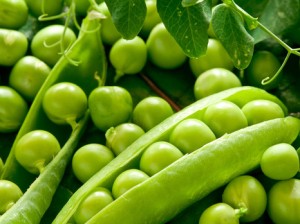
This week your boxes will contain garden peas or snow peas! Of course, they have nothing to do with actual snow. A few years ago during autumn, I received a phone call from a farmer in the Golan Heights:
“We grow strawberries during summertime, and we’re looking for a winter crop. Someone recommended snow peas as a crop that can withstand heavy snow. What do you suggest?”
“Snow peas in the extreme cold of the Heights?” I asked in surprise. “We know these peas to be very sensitive to cold. Here, we seed them early and aim for a yield in November. True, peas grow in wintertime and manage the Israeli cold well… but they cannot tolerate frozen weather.”
“Wait, if it’s sensitive to extreme cold, then why is it named snow pea???”
Good question. One suggestion has to do with the white glare reflecting off its pod, so thin and shiny. I guess someone very poetic found that the pea awakened his/her yearning for white, shiny snow, thus bestowing this confusing name on the hapless pea. You can also go with “Chinese pea” or “sweet pea.” I have even encountered recipes that coin it the “French pea.” As far as I know, the French actually call it mange-tout meaning: eat it all, because the whole thing is consumable, pod and all.
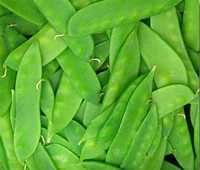
The flat pea was developed by Dutch farmers in the 16th century. From Holland it traveled to England, and then on to the Far East. Of course, the Chinese coined it “hoh laan dau,” meaning “the Dutch pea.” The flat pea’s charming consent to be stir-fried, the preferred Chinese method of cooking, made it a favorite for a billion Chinese, granting it the new name of “Chinese pea.” It traveled to San Francisco in the luggage of Chinese immigrant workers on their way to build the great railways in the West. Those who ended up farmers named it Shii dau, snow pea, perhaps out of a longing for home and the Chinese winter. Hence the confusing name.
But between you and me, we are willing to forgive, because behind all the different nicknames lies a sweet, crunchy pea, with a flat-to-bulging figure, that is so yummy! It also denotes the start of pea season at Chubeza. In general, we grow two prominent pea varieties: the flat one (snow/French/Dutch/Chinese, what have you) and the chubby garden pea, from which we extricate the lovely roly-poly peas.
Our snow peas are grown by trellising (on a vine). But unlike the tomato, eggplant and pepper, which require us to bolster their support, the pea plants only require stretching a net between the poles and they do the rest, sending out their tendrils and climbing independently. The delicate nature of the plant with its thin, silk-like stems and leaves causes it to be exceptionally light, making it easier to climb and hold onto. Climbing plants always seem to me to be more intelligent, the kind that can find the solution with their own “two feet.” Not enough light out here? Let’s climb up and find some more!” When the pea tendril, which develops from the leaf, meets a hard object (even a thin net like ours), it begins growing cells in a varying manner–-those close to the hard object get smaller, while the ones farther away grow longer. This generates a twist and then a bounding of the tendril upon the net, like a little spring. Such a dance can continue from one to ten minutes. Amazing, don’t you think? Here’s some more from this wonder
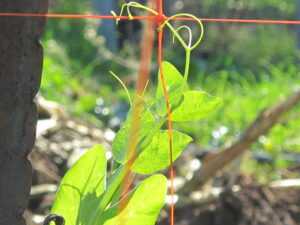
As for us, this climbing makes us so happy, as we know that soon we will be able to straighten our backs. Now we are harvesting the first rounds of snow pea pods from the lower part of the plant. But gradually, as it climbs higher, the peas will ripen at a higher level, and we too will be able to raise our backs like homo sapiens and harvest peas while upright. What joy!
Wishing you a nice warm week in this frigid cold weather, and good to all! Alon, Bat Ami, Dror, Yochai, Orin and the entire Chubeza crew
_______________________________
WHAT’S IN THIS WEEK’S BOXES?
Monday: Beets/kohlrabi, broccoli, peas/Jerusalem artichokes, cucumbers, tomatoes, celery/celeriac/parsley root, carrots, parsley/coriander, lettuce, fennel/baby radishes. Small boxes only: Cauliflower/cabbage
Large box, in addition: Potatoes, Swiss chard/kale, scallions/leeks, green fava beans.
FRUIT BOXES: Oranges, clementinot, bananas, avocado.
Wednesday: Beets/kohlrabi, broccoli, peas/green fava beans, cucumbers, tomatoes, celeriac/parsley root, carrots, parsley/coriander, lettuce, leeks. Small boxes only: Jerusalem artichokes
Large box, in addition: Potatoes, Swiss chard/kale, cauliflower/cabbage, fennel/baby radishes
FRUIT BOXES: Oranges/pomelit, clementinot, bananas, melon/avocado.

